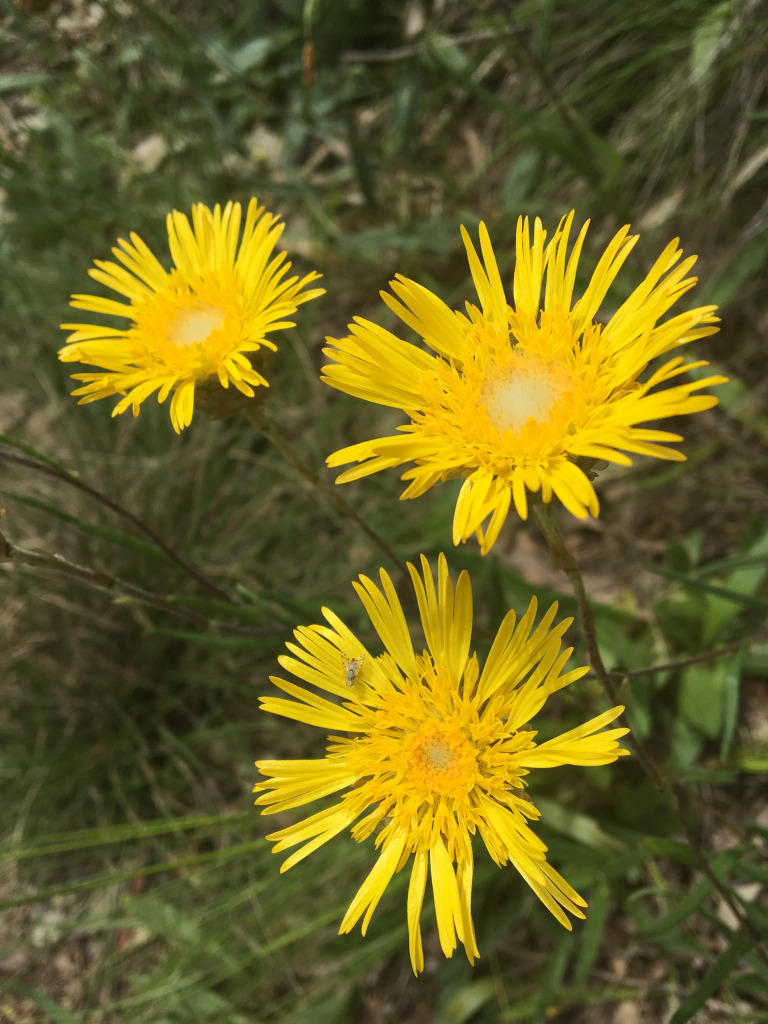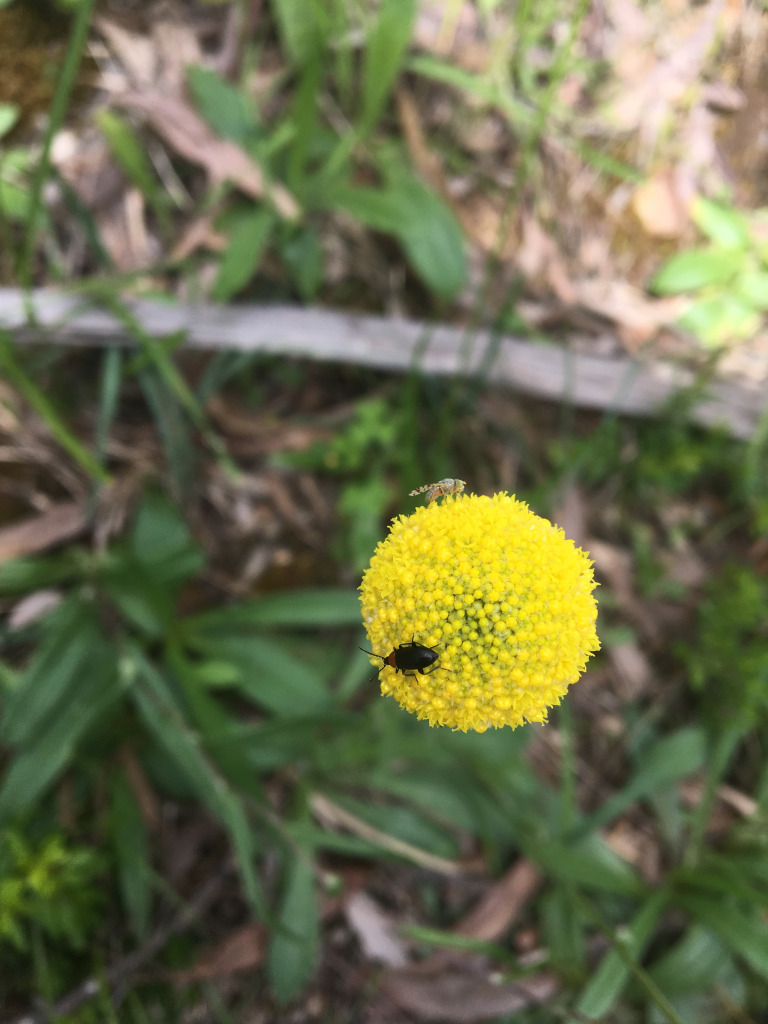One of my favourite things about early summer is the abundant flowering of a prime patch of Showy Podolepis along the top track of Tipperary Springs.These wonderful native daises are appropriately named for they are indeed very showy! Packed densely along the path, and growing in between grassy tussocks and rocks, their blossoms are a beautiful golden yellow.

The family of plants known as daisies is called the Asteraceae, after the Greek word for star. It is one of the largest plant families – with over 20,000 species worldwide. There are your traditional garden daisies, food plants such as sunflower, artichoke and surprisingly: lettuce. The yam daisy or murnong is an important indigenous food plant.
Chamomile, marigold and absinthe are also daisies, as well as hundreds of weed species such as capeweed.
In Australia, there are about 1000 native daisies. These include shrubs such as the beautiful Olearia family and the Ozathamnus or Grey Everlasting, and our two cassinia shrubs – the dogwood of wetter areas, and the Chinese scrub or coffee bush of drier habitats.
Weedy looking native daisies include the whole Senecio or Fireweed family, a common feature in our local forests, especially after disturbance.
Podolepis are endemic, which means that the 20 or so species grow only in Australia.
The Showy Podolepis patch I am familiar with also has a few other daisy species, including those fantastic round flowers known as billy buttons (Craspedia). Billy buttons are also daisies!

The old name for Asteraceae was Compositae, named after the structure of the daisy flower. The flowers are composed of a tight mass of tiny little flowers, and the petal-like structures are in fact brightly coloured bracts. The Podolepis pictured has tiny flowers in the centre, surrounded by yellow bracts, and the billy button is a ball of flowers, without any bracts.
This type of flower head means that when an insect visits a daisy, they are actually visiting hundreds of tiny flowers for nectar and pollen, and when fruiting time comes, abundant seeds are produced, creating food for ants and small mammals.
Whether they are shrubs or single plants, when our daisies are in full flower, the flowers are covered in insects such as beetles, bees, butterflies, and native hoverflies which in turn feed birds. The young of these insects feed on the leaves of daisies when they are in larval form, also wonderful food for birds which are often nesting when the daisies are in flower.
Planned burning that is carried out too often, or too hot can wipe out the daisy shrubs, much to the great detriment of the ecology of the forest.
There are some fantastic Showy Podolepis patches along roadsides in the Wombat Forest – well worth a drive and coming into full display now.
0 Comments